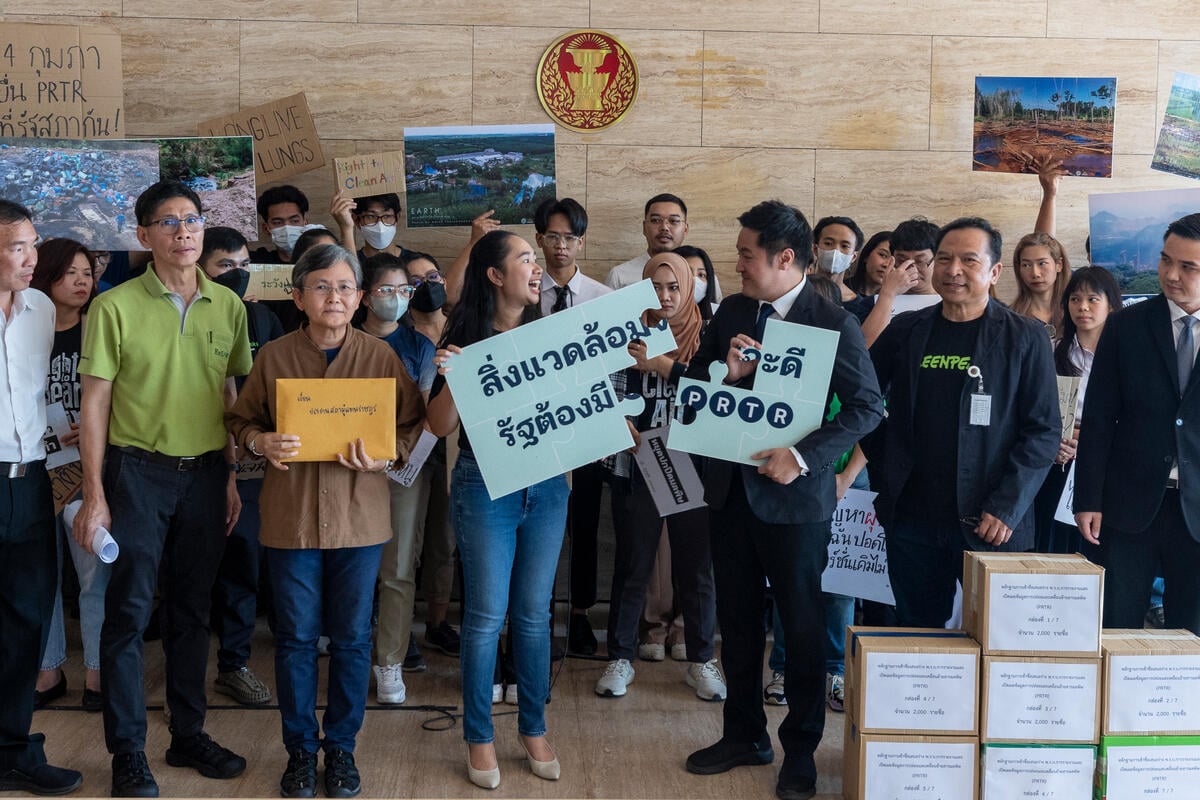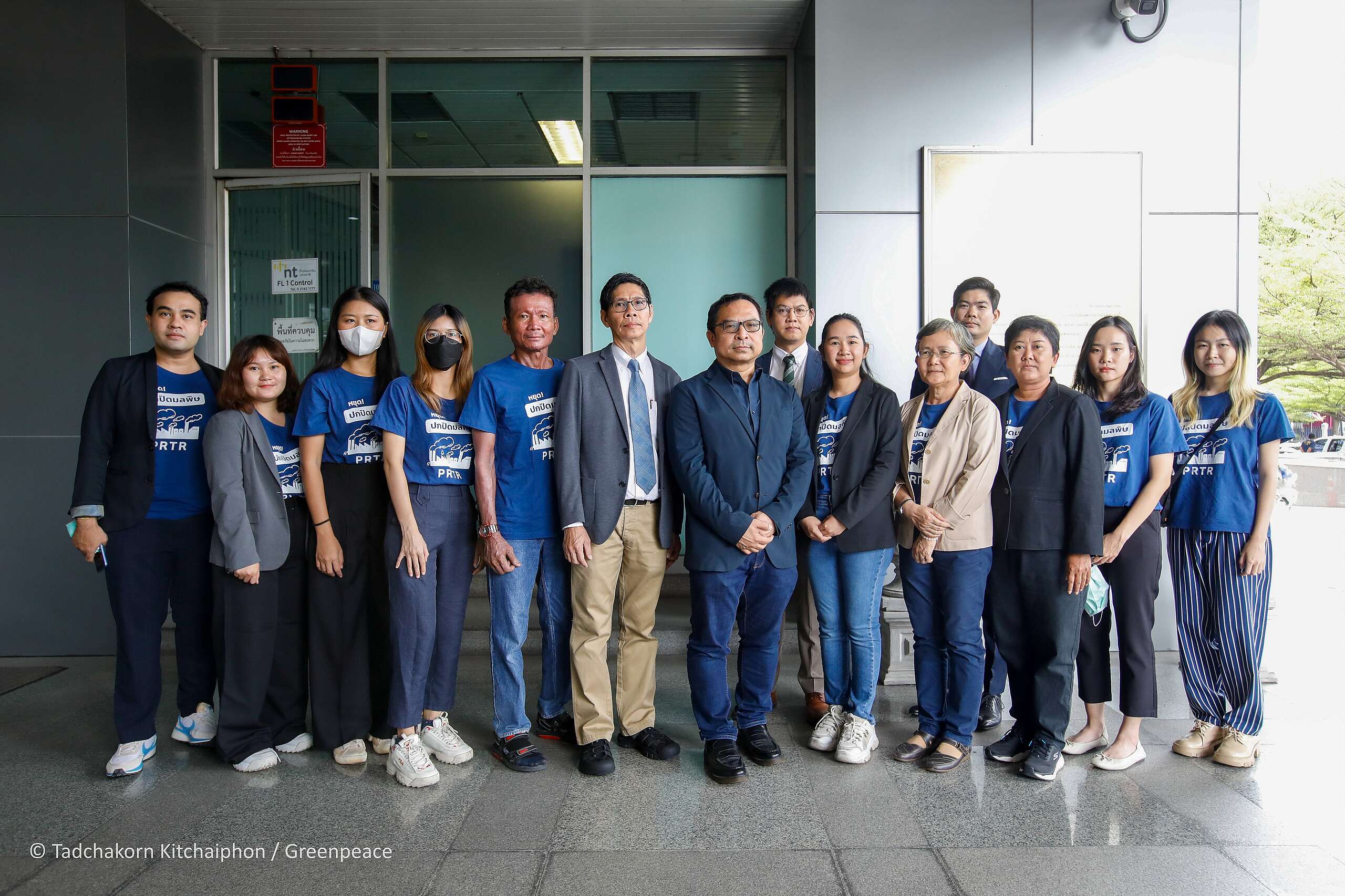An analysis of industrial maize plantation, hotspots, and burn scars from satellite imagery between 2015 – 2019 in the Mekong sub-region (Upper Northern Thailand, Lao People’s Democratic Republic and The Shan State of Myanmar)
In Thailand, maize (corn) is considered as one of the country’s most valuable cash crops supported and promoted by the government both for domestic usage and for export. It plays an important role in the manufacturing of feeds used in livestock, a rapidly growing industry. The latest 2019 data collected by the Office of Agricultural Economics reveals that there are 6,929,904 rai dedicated for maize agriculture in Thailand, much of it located in the Upper Northern of Thailand.
Both the PM2.5 and transboundary haze pollution are directly related to the growth of monoculture agriculture in Thailand and in the neighboring countries. There is evidence that maize pricing varies with the number of fire hotspots. When there is a high demand for maize, there is also a higher number of hotspots.
Industrial maize cultivation at mass production levels results to land cover change of forest areas, specifically watershed forests and arable land for other types of crop farming. In this study, satellite images– using Moderate Resolution Imaging Spectroradiometer (MODIS) equipment from NASA’s Terra and Aqua satellite and VIIRS system satellite– have detected hotspots, burn scars in maize farming areas located in Mekong sub-region which also includes Upper Northern Thailand, Lao People’s Democratic Republic, and the Shan State of Myanmar. The images reveal a correlation between the increase in industrial maize plantation and transboundary haze pollution- a grave threat to local communities.
The country’s broken agricultural and food manufacturing systems are harming Thai’s health. The livestock industry, considered as one of the biggest contributors to climate change, is also gravely impacting people’s lives. Both the government and the industrial sector must come together and ensure necessary changes to promote sustainability in the supply chain and safeguard people’s right towards a healthy and balanced ecology.
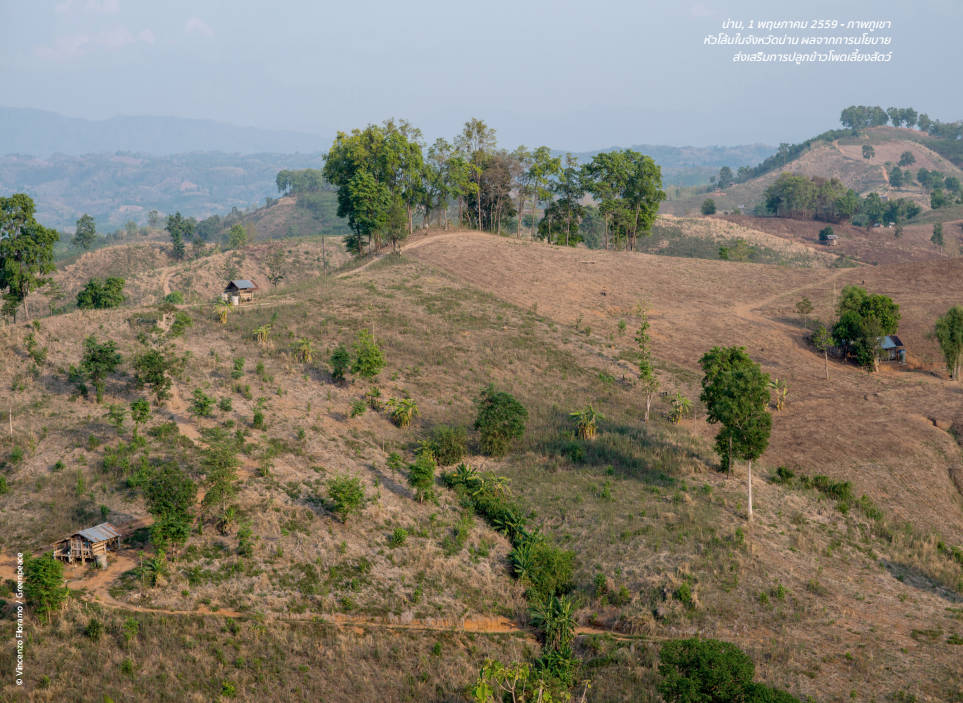
Maize Cultivation, Land Use Change, and Transboundary Haze Pollution
According to the United States Department of Agriculture (USDA), “approximately half of corn farming areas are located in damaged forest areas, in which the government sector is unable to identify nor certify the right of the land issue.”[1] Even though the claim does not hold solid affirmation, maize farming is still associated with land conversion of the forest areas and other types of crop farmland. See image above of a deforested Upper Northern Thailand as reference. In 2018, the Thai government gave the green light to a “national agenda” proposal to cope with the loss of over 8.6 million rai, damaged from the invasion for maize agriculture, using Nan as a pilot city [2] for this project (Prachachat, 2018).
Furthermore, the livestock industry plays a role in driving environmental destruction and climate change. From land burning (before and after harvest), to monoculture agriculture to chemical fertilizer usage, all these activities add to the deterioration of land. It has possibly created a necessity to relocate new farming grounds, with forest areas considered a prime option.
With wildfires as a result of land burning, more pollution and greenhouse gas are released, affecting climate temperatures as well as the air and water quality in the region. These changes also affect the quantity of crop production, impacting the country’s food security. Currently, there are stricter policies on maize purchasing and this has influenced businesses to invest in neighboring countries as an alternative and to compensate for the loss from production in Thailand.
Thailand’s food manufacturing and livestock market consists of big businesses led by Charoen Pokphand Group (CP), Betagro, Saha Farm, Cargill, Thai food Group, GFPT, and Laemthong Potchana. All of the listed businesses contribute to the connected supply chains in agricultural fields, forage plant production to food processing. Consequently, these business groups wield power over the economy, just as the government has power over maize pricing. Aside from dominating the market share, all the companies mentioned own a combined 90 percent of chicken meat production (Petchseechoung, 2017). [3] It is almost certain that almost all of the chicken meat and eggs available in Thai market comes from the industry, unless the consumer directly purchases it from independent small farmers.
A major portion of the market belongs to the Charoen Pokphand Group (CP). Even though they hold only 30 percent of the domestic market, the CP Group is the largest feed manufacturer in the world (according to the report by Market Research, 2019). [4] About 42 percent of the company’s revenue in 2017 was generated from animal feed sales amounting to 229,539 million Baht.
Report Findings
Greenpeace Thailand, and Geo-Informatics and Space Technology Development Agency (GISTDA North), the Faculty of Social Sciences of Chiang Mai University, conducted a study on the conversion of maize farming areas, hotspots, and traces of burn areas from satellite images between 2015 to 2019 in the sub-region of the Mekong Basin. The study analyzed land cover/land use of the maize farming area with a scale over 250 square meters based on satellite imaging using the Moderate Resolution Imaging Spectroradiometer (MODIS) system from NASA’s Terra and Aqua satellite. It also analyzed hotspots of over 375 square meters according to the resolution of the VIIRS system satellite equipped on Suomi-NPP and NOAA-20.
Hotspots in Maize Farming Areas
There was a noticeable increase in maize farming from 2015 to 2017 in the Upper North of Thailand. The activity decreased in 2019. Meanwhile, the Shan State of Myanmar had the opposite situation as there was a decrease in maize farming from 2015 to 2018. It picked up again in 2019 as more farming areas were developed. On the other hand, the maize cultivation areas in the Lao People’s Democratic Republic had been varied every other year during 2015 – 2019.
In the last five years, there has been an increase in the burn scars of maize farming areas in the sub-region of the Mekong Basin, from 14.69 percent in 2015 to 24.4 percent in 2019. The rise of the number of hotspots found is a direct correlation to the number of burned land found in maize farming areas in the sub-region of the Mekong Basin in the same year (2019). A key analysis of satellite images showed that 30 percent of total hotspots can be found in maize farming areas.
The growth in the maize market, combined with the rise of hotspots and the burning of land to prepare for the next harvest, has resulted to a pollution crisis now taking a toll in the affected regions of Thailand, Myanmar and Laos. Every year, from March to April, air pollution blankets the region causing major harm to people’s health.
In 2016, the Thai government initiated a policy change on maize purchasing, as well as price support policy that allows the maize products to be purchased only through land ownership documents. This impacted farmers who had to deal with leftover maize that were unsellable. This policy seemed to contribute to the decrease of hotspots in Thailand. The hotspot numbers had been decreasing since 2016, until 2019 when it increased by approximately 14,000 hotspot areas.
Thailand experiences poor air quality at the beginning of the year. Less breeze and lower temperatures easily traps air pollution coming from the transport sector in cities. However, the country’s northern region suffers from the poorest levels of air quality from March to April, the same period when farmers harvest crops and burn land.
- Overall, there is a direct link between maize farming areas and land burning in the sub-region. There were significant burn scars in April (Figure 1). 2019 recorded the highest number of hotspots in maize farming areas, approximately 1,050,200 rai (Table 1).
- A country analysis reveals that the Upper Northern Thailand showed a high incidence of burn scars in maize farming areas during April, especially from 2017 to 2019 (approximate 100,000 rai).
- Similarly, the Shan State of Myanmar showed a high incidence of burn scars in maize farming areas during April, especially from 2018 to 2019 (approximately 120,000 rai).
- The Northern part of Laos also showed a high incidence of burn scars in maize farming areas in April from 2015 to 2017 (approximately 170,000 rai).
- Apart from April, land burning in maize farming areas also occurred throughout the year in all of the 3 countries. 2019 had the highest incidence of burn scars in maize farming areas, with an estimated total of 1 million rai.
Figure 1: Comparison of burn scars in maize farming areas in sub-region of the Mekong Basin from 2015-2019
 |  | 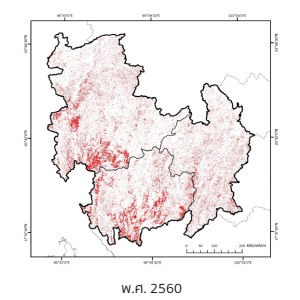 |
| พ.ศ. 2558Year 2015 | พ.ศ. 2559Year 2016 | พ.ศ. 2560Year 2017 |
 | 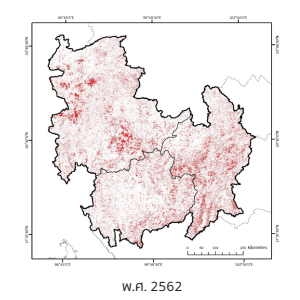 | |
| พ.ศ. 2561Year 2018 | พ.ศ. 2562Year 2019 |
Table 1. Yearly comparison of burn scars in maize farming areas at the sub-region of the Mekong Basin
| ปีYear | พื้นที่เผาไหม้ที่พบในพื้นที่ปลูกข้าวโพด (ไร่)The number of burn scars found in maize farming areas | พื้นที่เผาไหม้ทั้งหมดในอนุภูมิภาคลุ่มน้ำโขง(ไร่)The number of burn scars found in the Sub-Region of Mekong Basin |
| 2015 | 780,074.87 | 1,392,280 |
| 2016 | 896,652.74 | 1,693,717 |
| 2017 | 883,455.19 | 1,506,750 |
| 2018 | 924,855.84 | 1,637,000 |
| 2019 | 1,050,207.85 | 1,753,362 |
- There is a link between maize farming areas and hotspots in the sub-region of the Mekong Basin. Hotspots in maize farming areas mostly occurred in April every year, except in 2015. There were 17,000 hotspots found in maize farming in all of the 3 countries combined.
- An analysis per country shows the Upper Northern Thailand had the highest number of hotspots in maize farming areas during March and April, occurring every other year, with approximately 4,000 hotspots per month.
- Since 2016, the Shan State of Myanmar has had a high incidence of hotspots in maize farming areas, occurring in April, with approximately 7,000 hotspots per month.
- The northern part of Laos experiences a high incidence of hotspots in maize farming during April, approximately 10,000 per month every year. 2019 clearly had the highest number of hotspots in maize farming areas in the sub-region of the Mekong Basin with approximately 50,000 hotspots compared to 25,000 in previous years (Table 2).
Figure 2: Hotspots and maize farming areas in the sub-region of the Mekong Basin from2015-2019
 |  | 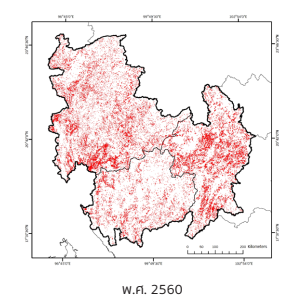 |
| พ.ศ. 2558 in 2015 | พ.ศ. 2559 in 2016 | พ.ศ. 2560 in 2017 |
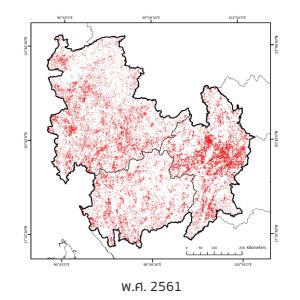 | 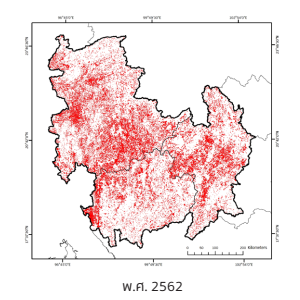 | |
| พ.ศ. 2561 in 2018 | พ.ศ. 2562 in 2019 |
Note: Red dots represent hotspots, while black spots represent maize farming areas
Table 2: The comparison of hotspots found in corn farming in sub-region of the Mekong Basin per year
| ปีYear | จุดความร้อนที่พบในพื้นที่ปลูกข้าวโพด (จุด)Hotspots Found in Maize Farming Areas | จุดความร้อนทั้งหมดที่พบในอนุภูมิภาคลุ่มน้ำโขง(จุด)Total Hotspots Found in Sub-Region of the Mekong Basin |
| 2015 | 32,893 | 101,967 |
| 2016 | 26,292 | 97,192 |
| 2017 | 25,786 | 79,307 |
| 2018 | 24,179 | 76,041 |
| 2019 | 51,962 | 176,044 |
An analysis of the 3 countries show that 30 percent of all hotspots were located in maize farming areas, while 70 percent were located in other areas such as forests and other crop farmlands. The data shows that 2015 and 2017 both had a high number of hotspots in maize farming areas, roughly 32.51 percent and 32.26 percent from the total number of hotspots.
Analysis, Plans, and the Future of of Industrial Maize Farming
As mentioned earlier, the areas of maize farming in the sub-region of the Mekong Basin varied during 2015-2019. However, analysis shows that the maize farming areas in Upper Northern Thailand has increased rapidly from 2015 to 2017. The number declined continuously until 2019. Meanwhile, the maize farming areas in the Shan State of Myanmar also declined from2015 to 2018, but rose in 2019. At the same time, Lao People’s Democratic Republic’s number of maize farming areas fluctuated from 2015 to 2018.
Stricter maize purchasing policy is one of the factors influencing big businesses to invest in neighboring countries to compensate for the loss from the production in Thailand.
The expansion of production areas to neighboring countries is another tactic used by the livestock industry to meet the demand for meat and animal feed in the global market. A report by Oxfam5 reveals information regarding the Charoen Pokphand Group (CP) and its investment in the Shan State of Myanmar under the name “Myanmar CP Livestock Co., Ltd.” [5] In 2012, the company invested in maize and rice production, including maize processing costing USD550 million. About 80 percent of the production rate goes to exporting (Oxfam, 2017).
Table 3: The comparison average maize farming areas in the sub-region of the Mekong Basin from 2015 to 2018
| พื้นที่Area | เนื้อที่ปลูกข้าวโพด (ไร่) (เฉลี่ย 6 เดือน)Maize farming areas (Rai) (Average of 6 months) | ||||
| พ.ศ. 2558 Year 2015 | พ.ศ. 2559 Year 2016 | พ.ศ. 2560 Year 2017 | พ.ศ. 2561 Year 2018 | พ.ศ. 2562 Year 2019 | |
| ภาคเหนือ ตอนบนของไทยUpper Northern Thailand | 2,978,750 | 3,246,875 | 3,375,000 | 2,904,375 | 2,727,500 |
| รัฐฉานของเมียนมาThe Shan State of Myanmar | 7,983,125 | 5,873,125 | 5,494,375 | 4,321,875 | 4,975,000 |
| ตอนบนของ สปป.ลาวThe northern part of Lao People’s Democratic Republic | 4,965,000 | 4,073,125 | 5,101,875 | 4,629,375 | 5,204,375 |
| Average number | 5,309,300 | 4,397,700 | 4,657,100 | 3,951,875 | 4,302,300 |
Research, conducted by the International Institute of Social Studies of Erasmus University Rotterdam, revealed how maize became the main cash crop in Myanmar due to Charoen Pokphand Group’s (CP) maize contract farming in the Shan State. China is the main export market of maize production in Shan (Woods, 2015). [6] Currently, there is not enough information to analyse the social and environmental impacts. A satellite image analysis shows a dramatic change in geography and its effects on land and cross border pollution from the intensive growth of monoculture for animal feeds.
The maize industry in Laos is similar to Myanmar as both countries are producing maize for the animal feeds industry mainly for export instead of using it as food domestically. Research by the Australian Journal of Anthropology (2019) stated that the northern part of Laos has become a maize farming area since 2000, mainly to export to Charoen Pokphand Group (CP) in Vietnam, which is part of the Charoen Pokphand Group (CP) Thai. This report also stated that Charoen Pokphand Group (CP) Vietnam is a full-cycle meat manufacturing company, from producing animal feed to meat processing. In 2010 Charoen Pokphand Group (CP) in Vietnam adopted a new policy to purchase cheaper animal feed. As a result, maize prices in Vietnam dropped. Due to the price decline, farmers now produce less maize. On the other hand, the maize production in Laos increased. More farmers chose to harvest maize for export since they can sell it for a higher price and in bigger quantity.
Greenpeace Thailand recommends that the Thai government and the agri-industry to:
1. Promote environmental sustainability in all aspects of the supply chain- for all meat products to be labeled, stating where it was sourced, to the type of animal feeds used to ascertain whether meat products are linked to deforestation, etc. All information must be disclosed and accessible to the public.
2. Provide concession maps from companies for transparency and accountability for deforestation and air pollution. The information on the map should include location and boundary, land registration record, investor name, purpose of investment, and the current land usage activity.
3. Enforce legal measures to sanction companies responsible for causing air pollution and environmental damage from their supply chain (from farming and purchasing of animal feeds, to livestock farming).
Both the Thai government and the industry must work together to protect people’s health and restore the environment after years of degradation and abuse. A shift is needed to change the current food systems through sustainable ecological agriculture. Aside from health benefits, ecological agriculture can help combat the effects of global warming.
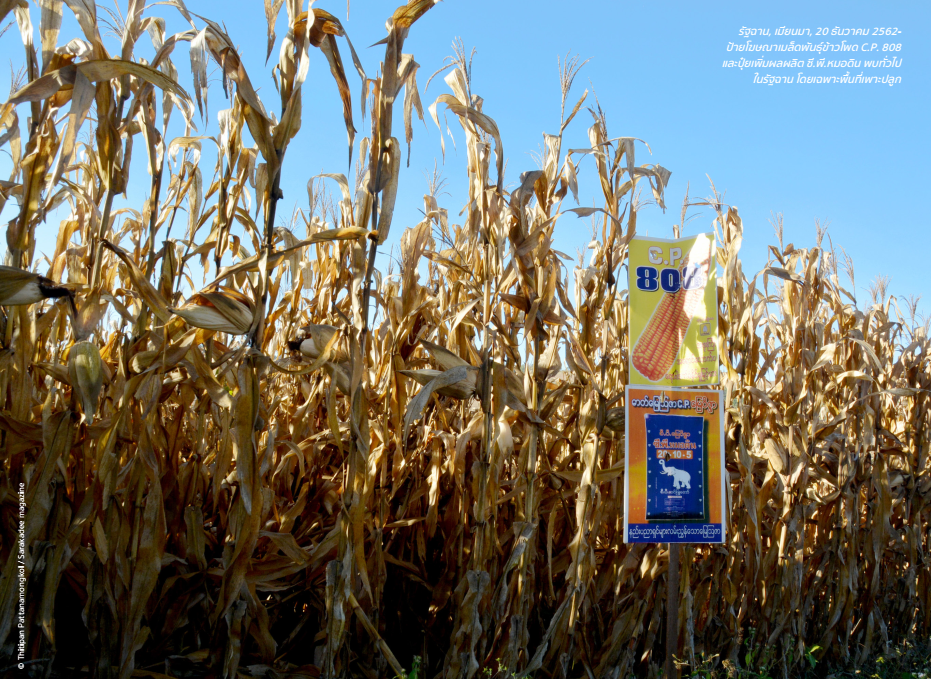
Shan, Myanmar, December 20, 2019- A maize farming measurement sign indicating that CP fertilizer was used.
Notes:
[1] USDA Foreign Agricultural Service, Thailand Grain and Feed Annual 2017. 15 มีนาคม 2560. Thailand Poultry and Products Annual 2019. 29 สิงหาคม 2562.
http://agriexchange.apeda.gov.in/marketreport/Reports/Poultry_and_Products_Annual_Bangkok_Thailand_8-29-2019.pdf USDA Foreign Agricultural Service, Thailand Grain and Feed Annual 2017. March 15, 2017. Thailand Poultry and Products Annual 2019. August 29, 2019
[2] https://www.prachachat.net/economy/ news-106459 Prachachat, เกษตรผนีก 7 ภาคี 4 กระทรวง ทวงคืนผืนป่า น่าน 2 แสนไร่ (7 associates and 4 ministry are joining force to reclaim 270,000 rai of the forest) . January 25, 2018. https://www.prachachat.net/economy/ news-106459
[3] Petchseechoung, Wareerat, FROZEN & PROCESSED CHICKEN, THAILAND INDUSTRY OUTLOOK 2017-19. มิถนุายน 2560. https://www.krungsri.com/bank/ getmedia/81639011-fd0b-4e89-8a38-64402b37ccce/ IO_Chicken_171019_EN_EX.aspx Petchseechoung, Wareerat, FROZEN & PROCESSED CHICKEN, THAILAND INDUSTRY OUTLOOK 2017-June 19, 2017. https://www.krungsri.com/bank/ getmedia/81639011-fd0b-4e89-8a38-64402b37ccce/ IO_Chicken_171019_EN_EX.aspx
[4] Market Research Reports, World’s Top 10 Animal Feed Companies. 2017. https://www.marketresearchreports. com/blog/2019/08/27/world%E2%80%99s-top-10-animal- feed-companies
[5] Oxfam, Whose Crops, At What Price?: Agricultural investment in Myanmar. กุมภาพันธ์ 2560.
https://oi-files-d8-prod.s3.eu-west-2.amazonaws.com/s3fs-public/file_attachments/dp-whose-crops-what-price-myanmar-040217-en.pdf
[6] Woods, Kevin, CP maize contract farming in Shan State, Myanmar: A regional case of a place-based corporate agro- feed system, International Institute of Social Studies and The Regional Center for Social Science and Sustainable Development. พฤษภาคม 2558. https://www.iss.nl/sites/ corporate/files/CMCP_35-_Woods.pdf
Woods, Kevin, CP maize contract farming in Shan State, Myanmar: A regional case of a place-based corporate agro- feed system, International Institute of Social Studies and The Regional Center for Social Science and Sustainable Development. May 2558. https://www.iss.nl/sites/ corporate/files/CMCP_35-_Woods.pdf
Click here for the Thai version of this report
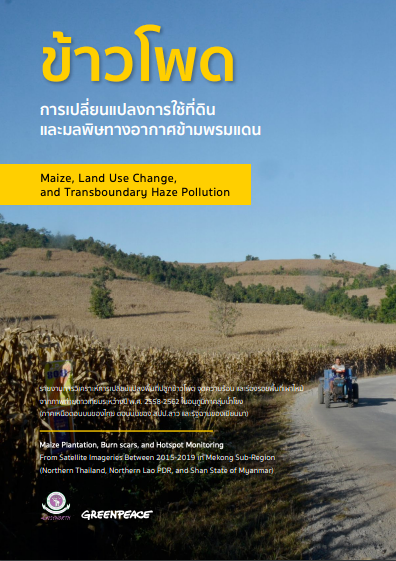
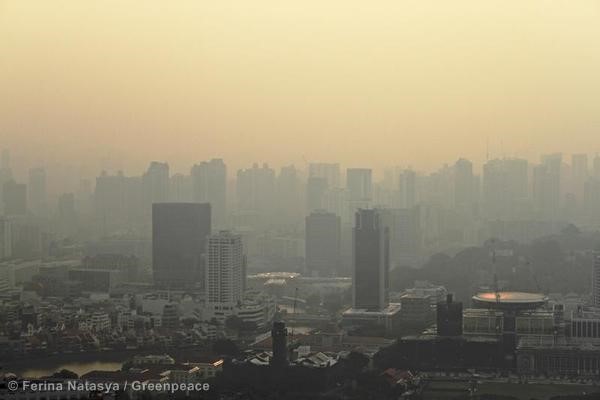
End the air pollution crisis once and for all, because no-one should have to worry about what they breathe.
Get Involved

